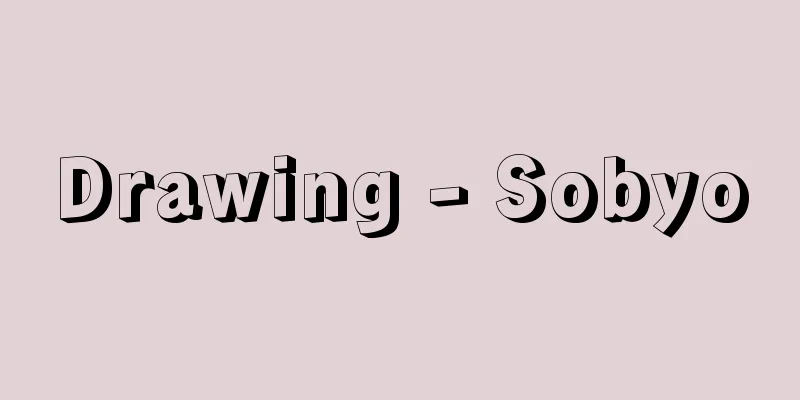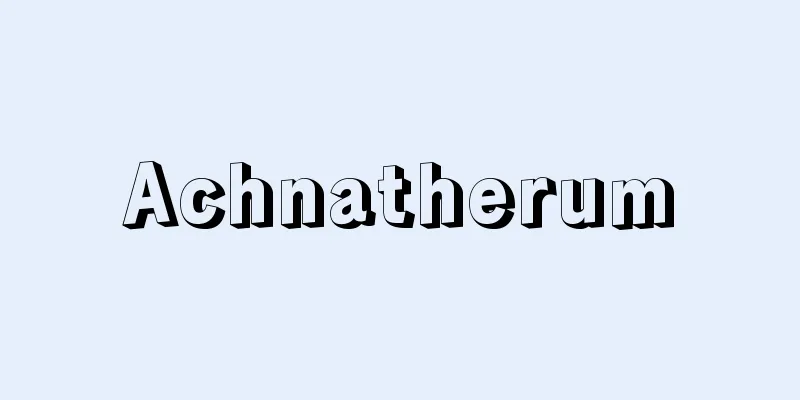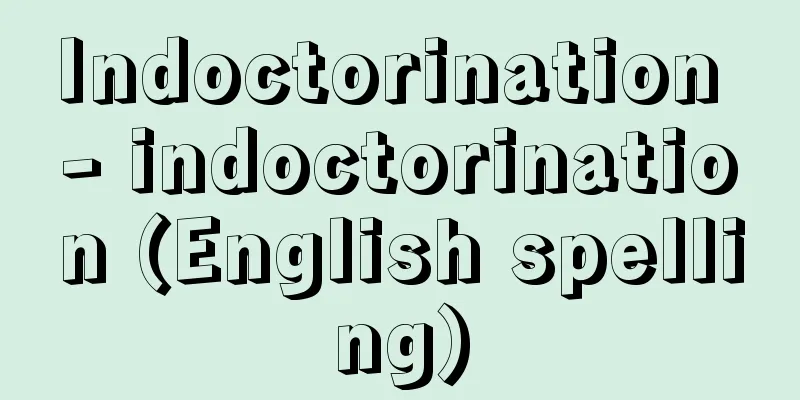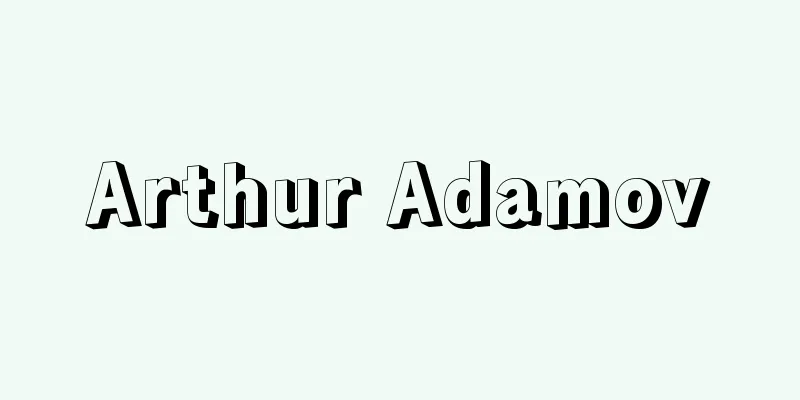Drawing - Sobyo

|
A term for art. It corresponds to the English word "drawing" and the French word "dessin." The verb forms of both words, "draw" and "dessiner," mean "to draw a line, to sketch," so the concept of a sketch would be appropriate to refer to art that expresses itself in some linear way, and to the work itself. Drawings can be found in cave paintings from the Ice Age, when human artistic activity began. Drawing should be possible on rocks, stone or earth walls, or even on the ground, as long as there is a means to draw or inscribe on them, and there must have been countless sketches that were created in this way and then disappeared. The invention of papyrus paper by the ancient Egyptians and their use of reed pens to write and draw pictures on it marked a landmark event in the history of drawing art. Since then, there have been many inventions, discoveries, and improvements to drawing methods, but the widespread use of paper in Europe from the end of the 14th century to the 15th century brought about the establishment and prosperity of drawing art. In relation to painting, drawing played a subordinate role artistically as a preliminary sketch or study. After the Renaissance, many artists created drawings as independent finished works in themselves. The drawings of Leonardo da Vinci, Raphael, and Michelangelo constituted one of the pinnacles of European drawing art. Among the Northern Renaissance painters, Dürer especially loved line art such as drawings and prints, and left behind many excellent works. In the 17th century, Rembrandt of the Netherlands and Rubens of Flanders reflected the spirit of Baroque art in their drawings, but the series of landscape drawings by the French painter Claude Lorrain, who studied in Italy, are also famous. In Rococo art, which developed mainly at the French court, elegant drawings using pastel, red paint, and Comté were particularly popular, and Watteau, Boucher, Fragonard, and others made many drawings that made use of the characteristics of these materials. In the first half of the 19th century in France, the classicism of Ingres and the romanticism of Delacroix showed contrasting artistic developments, and in the field of drawing, there is a striking contrast between the former's rigid graphite lines and the latter's free and free lines. The Impressionists and the painters of their time also produced distinctive drawings, but the names of Manet, Degas, Renoir, and Lautrec are particularly notable. In the Post-Impressionists that followed, Seurat's splendid charcoal drawings with their black and white contrasts, Van Gogh's powerful pen drawings, and Cezanne's constructive drawings are particularly notable. Furthermore, many of the drawings by sculptors such as Rodin, Bourdelle, and Maillol go beyond the significance of studies for sculpture and have a different charm to the drawings of painters. In the 20th century, the genius of Matisse and Picasso is as prominent in drawing as in painting. In the East, the koroku (linear) drawing method of ink painting, the mokkotsu (light and shade) drawing method, and the monochromatic hand-painted ukiyo-e are also conceptually considered sketches, but they are generally treated as part of Chinese or Japanese painting, and are not considered separately as sketches. In Japan, sketches became popular after the Meiji period with the influx of Western painting. The most popular drawing materials from the late Middle Ages to the early Renaissance were metal styluses (silver, gold, copper, lead, tin, or alloys such as brass and bronze), especially silver styluses. These are made by sharpening a metal rod or attaching a small piece of metal to the end of a handle. Since they are too hard to draw directly on paper, they were made by burning and grinding the bones of birds and animals, mixing them with glue, and applying them to the paper to create a base. They are hard and have almost no thickening or thinning, and produce slightly grayish lines. Most of the sketches by Leonardo and Michelangelo were done with pen or chalk. The reed pen was the oldest pen, but from around the 7th century, goose styluses, made from bird quills, especially goose quills, became popular, and were the main pen until the development of metal pens in the 18th century. The inks used in the pen include India ink, iron gall ink, vista ink, sepia ink, etc. Chalk can be natural or processed. Natural chalk is made by cutting out a mixture of pigment and clay, and colors such as black, red, and white can be obtained depending on the pigment composition. Artificial chalk was created due to the lack of good quality natural chalk, and is made by adding a water-soluble binder to pigment. Chalk that is close to the hardness of natural chalk is called sticky chalk, and pastel is powdery and somewhat brittle. Pastel already appeared around the beginning of the 16th century. Conté is a derivative of sticky chalk, and was invented by Nicolas-Jacques Conté (1755-1805) of France in the 19th century. The pencil was also invented by Conté at the end of the 18th century, and natural graphite was used before that. Charcoal for drawing is made by baking willow or grape twigs, and became widely used around the second half of the 15th century. [Haruki Yaegashi] "Complete Collection of World Drawings edited by F. J. S. Canton, 11 volumes (1978, Kodansha)" [References] | | | | |Source: Shogakukan Encyclopedia Nipponica About Encyclopedia Nipponica Information | Legend |
|
美術用語。英語のドローイングdrawing、フランス語のデッサンdessinにあたる。両者の動詞形draw, dessinerは、いずれも「線を引く、線描する」の意であり、したがって素描の概念としては、なんらかの線的な方法で表現する芸術、およびその作品とするのが妥当であろう。素描は発生的には、人間の芸術的活動が始まった氷河時代の洞窟(どうくつ)絵画にみられる。岩であれ、石や土の壁であれ、あるいは地面であれ、そこに描きあるいは線刻する手段さえあれば素描は可能なはずであり、実際にそのようにして生まれ、消えていった素描が無数にあったはずである。 古代エジプト人がパピルス紙を発明し、それに葦(あし)のペンで文字や絵を描き始めたのは、素描芸術の歴史のうえで画期的なできごとであった。以来、素描の方法には数々の発明、発見、改良が加えられたが、ヨーロッパにおける14世紀末から15世紀にかけての紙の普及は、素描芸術の成立と隆盛をもたらした。絵画との関連において考えた場合、素描は下絵や習作として、芸術的には従属的な役割をなすものであった。 ルネサンス期以後は、素描をそれ自体独立した完成作として描いた画家は少なくない。レオナルド・ダ・ビンチ、ラファエッロ、ミケランジェロらの素描作品は、ヨーロッパ素描芸術の一つの頂点を築いている。また、北方ルネサンスの画家たちのなかでは、デューラーがとりわけ素描や版画などの線描芸術を愛し、多くの優れた作品を残している。17世紀では、オランダのレンブラント、フランドルのルーベンスがバロック芸術の精神を素描にも反映させたが、イタリアに学んだフランスの画家クロード・ロランの風景素描の連作も名高い。フランスの宮廷を中心に展開したロココ芸術では、とくにパステルやサンギーヌ、コンテによる優美な素描が好まれ、ワトー、ブーシェ、フラゴナールらに、これらの素材の特質を生かした素描が多い。 19世紀前半のフランスでは、アングルの古典主義とドラクロアのロマン主義が対照的な芸術の展開をみせたが、素描においても前者の石墨による硬質な線を生かした素描と、後者の闊達(かったつ)自在な線のそれは好対照をなしている。印象派およびその時代の画家たちにもそれぞれ個性的な素描があるが、とりわけマネ、ドガ、ルノワール、ロートレックの名があげられる。これに続く後期印象派では、スーラの黒白対比のみごとな木炭素描、ゴッホの力強いペンの素描、セザンヌの構築的な素描がとくに際だっている。また、ロダン、ブールデル、マイヨールら彫刻家の素描の多くは、彫刻のための習作的な意義を超え、画家の素描とは趣(おもむき)の異なった魅力をたたえている。20世紀では、絵画におけると同様、マチスとピカソの天分が素描においても際だっている。 東洋における墨絵の鉤勒(こうろく)描法(線的描法)、没骨(もっこつ)描法(明暗による描法)、あるいは肉筆浮世絵の単色のものなども概念的には素描と考えられるが、一般には中国絵画、日本絵画のなかで扱われ、素描として独立に取り上げられることはない。日本では明治以降、西洋絵画の流入に伴い、素描が盛んに行われるようになった。 中世末期からルネサンス初期にかけて愛用された素描画材は、金属尖筆(せんぴつ)(銀、金、銅、鉛、錫(すず)、あるいは真鍮(しんちゅう)、ブロンズなどの合金)、とくに銀筆である。これは、金属の棒状のものをとがらしたもの、あるいはその小片を柄(え)の先につけたもので、硬くて紙に直接描くことはできないので、鳥獣の骨を焼いて磨(す)りつぶしたものに膠(にかわ)を混ぜて紙に塗って下地をつくった。硬質で肥痩(ひそう)はほとんどなく、やや灰色がかった線が得られる。レオナルドやミケランジェロらの素描は、ほとんどペンかチョークで描かれている。ペンは葦ペンがもっとも古いが、7世紀ごろから鳥の羽軸、とくに鵞鳥(がちょう)の羽軸を用いた鵞ペンが好まれ、18世紀に金属ペンができるまではこれがペンの代表であった。ペンにつけるインキは、墨、鉄没食子(もっしょくし)インキ、ビスタ・インキ、セピア・インキなどである。 チョークは天然のものと加工したものがあり、天然チョークは顔料と粘土がほどよく混合した状態のものを切り出して用い、顔料の成分により黒、赤、白などの色が得られる。人工チョークは良質の天然チョークの不足から生まれたもので、顔料に水溶性のつなぎ剤を加えて成形する。このうち、天然チョークに近い硬さのものを粘りチョーク、粉っぽくややもろいものをパステルとよぶ。パステルは16世紀の初めごろにはすでに登場している。コンテは粘りチョークから派生したもので、19世紀フランスのニコラ・ジャック・コンテNicolas-Jacques Conté(1755―1805)の考案による。鉛筆も18世紀の末にコンテによって発明されたもので、それ以前は天然の石墨が用いられた。素描用の木炭は柳やブドウの小枝を蒸し焼きにしてつくったもので、15世紀後半ごろから頻繁に使用されるようになった。 [八重樫春樹] 『F・J・S・カントン監修『世界素描全集』全11巻(1978・講談社)』 [参照項目] | | | | |出典 小学館 日本大百科全書(ニッポニカ)日本大百科全書(ニッポニカ)について 情報 | 凡例 |
>>: Union of Writers of the Soviet Union
Recommend
Papaver commutatum (English spelling)
…[Masao Yamashita]. … *Some of the terminology th...
Phase equalizer - isoutouki
...Compensating for frequency and phase character...
Siberian iris
…(3) Biedres irises (those without hair-like proj...
Lost Horizon (Literature)
...In the 20th century, the Russian mystic Roeric...
Ager Publicus
Public land in ancient Rome. In the course of its ...
Kikugawa [town] - Kikugawa
A former town in Ogasa District, southern Shizuoka...
didjeridu
… The instruments used to accompany the songs and...
Festus (English spelling) Sextus Pompeius Festus
Roman grammarian from the late 2nd century. Date o...
Mac-Mahon, Marie-Edme-Patrice Maurice de, Duc de Magenta
Born: July 13, 1808, Saône-et-Loire, Sully [Died] ...
Mejiro (Japanese white-eye) - Mejiro (English spelling) Japanese white-eye
A bird of the passerine order, family White-eye (i...
Lytic - Lytic
〘Noun〙 The phenomenon in which bacteriophages grow...
"Eros + Massacre" screening incident
…The right to privacy has developed in the United...
Prostitute - Gijo
1 Geisha Entertainment Also, prostitute. 2. Heian ...
Hotatsuji - Hotatsuji
A deciduous shrub of the Ericaceae family that gro...
Pharisee - Pharisee (English spelling) Pharisaioi; Pharisees
They are also called Pharisees, Pharisee, or Phari...









